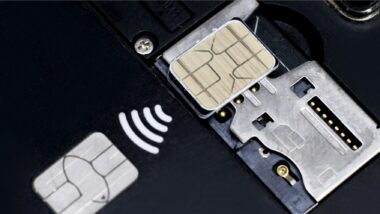
The iPhone changed everything. And while that’s obvious with hindsight, on its release the original device was dismissed by industry insiders and commentators. It launched without operator support and defied accepted design standards like physical keyboards. Of course, we all know what happened next, propelling Apple to become the world’s most valuable company.
But ten years is a long time, so we thought it would be a great time to revisit how far we’ve come since Steve Jobs got up on that stage all those years ago.
Competition
This is the most striking disruption wrought by Apple. Blackberry and Nokia were market leaders back in 2007. Now both have been completely forced out of the handset market. And beyond hardware, operating systems have also completely changed. Back then Nokia’s Symbian, Palm OS, Blackberry OS and Windows Mobile ruled the roost. Now it’s dominated by iOS and Android. And the reason for that can largely be put down to….
The App economy
With the launch of the App Store in 2008, Apple created an industry. The company may not be a first mover, but when it sets its sights on something, spectacular things happen more often than not. The App Store launched with 500 apps, now boasts 1.2 million and popularized social media networks too. A few years after the app store launched, the idea that software is eating the world came about. And App Annie just put the worth of the app economy at $6.3 trillion by 2021.
iPad and tablets
Talking of defining categories, in 2010 Apple launched the iPad selling almost 20 million units in its first year. While sales from all vendors may been stagnant, this move proved that large screen touch devices can work, and will find mainstream adoption. You can probably thank Apple for the current touch-screens deployed across Windows too.
The benchmarkers
“Good design is all about making other designers feel like idiots because that idea wasn’t theirs.” Frank Chimero
This one is special. Apple did more than put a SIM in an iPod Touch. It changed forevermore how smartphone design would flow. Clamshells, physical keyboards, keyboards that slid out from underneath, PDAs. All gone in one fell swoop. Post iPhone, every popular smartphone was a slate of glass.
Until Touch ID came along in 2013, Biometric technology was only found in James Bond films or in a few ePassport gates in airports. However, it has quickly become a mainstream way of unlocking your phone and is now being adopted for authenticating in app payments and more. Once again Apple managed to put customer convenience at the heart of their iOS updates.
The smartphone consumes everything
It’s hard to underestimate just how reliant we’ve become on our smartphones. This video is four years old, and it’s remarkable that in only six years, entire segments were completely disrupted. Digital cameras are the most obvious, but simple things like flashlights, alarm clocks, GPS navigators have seen huge slumps in sales. We’ve moved into a digital world, and even things like streaming video owes their success to the connectivity contained within our phones.
New innovation to come
So ten years since the first iPhone we’re all still hooked. But what’s next? Well, advances in the Cloud and machine-learning are making our mobiles smarter than ever. Personal assistants that can answer questions and anticipate our needs are getting better every day. Important tasks that require comprehensive security like banking and payments are rolling out across the world, and we’re even making in-roads into using our phones as official ID documents.
How about you? When you look back on the past ten years, what do you think was a game-changer? Were there any opportunities missed? Get in touch and let us know!


